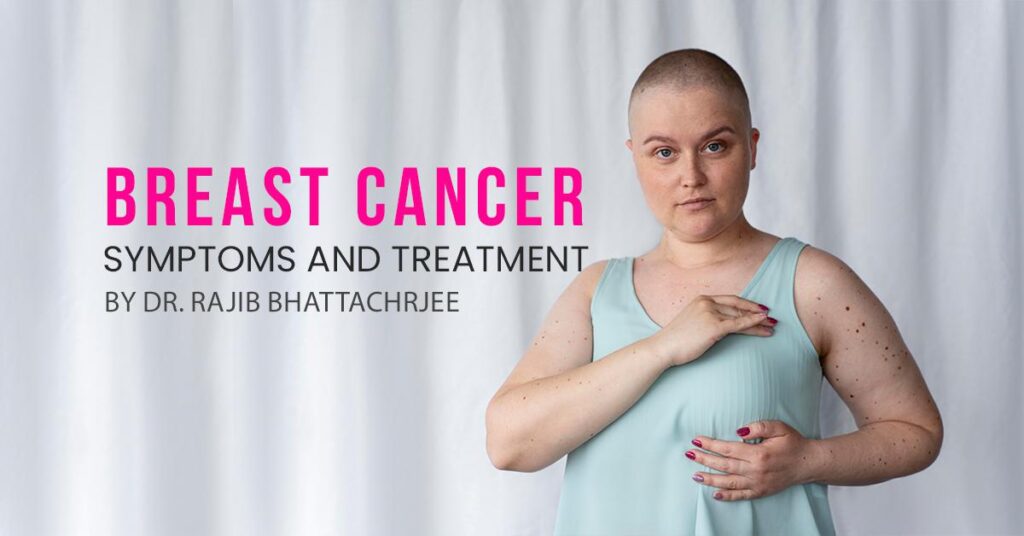Breast cancer, a formidable adversary that affects millions of lives worldwide, demands not only awareness but also access to top-notch medical expertise. In the bustling city of Kolkata, Dr. Rajib Bhattachrjee has emerged as a beacon of hope and healing for those confronting the challenges of breast cancer. In this exploration, we delve into the intricacies of breast cancer, its nuances, and the compassionate care offered by Dr. Bhattachrjee, an esteemed oncologist in Kolkata.
Breast Cancer Unveiled:
Breast cancer is a complex disease characterized by the uncontrolled growth of abnormal cells in the breast tissue. It can manifest in various forms, from ductal carcinoma in situ (DCIS), where abnormal cells are confined to the milk ducts, to invasive types that spread beyond the ducts into surrounding tissues.
Risk Factors:
Understanding the risk factors associated with breast cancer is crucial for early detection. While some factors, such as gender and age, are beyond control, others include:
- Genetics: A family history of breast cancer, especially with the BRCA1 and BRCA2 gene mutations, increases the risk.
- Hormonal Factors: Prolonged exposure to estrogen, whether through early menstruation, late menopause, or hormone replacement therapy, can elevate the risk.
- Lifestyle Choices: Factors like a sedentary lifestyle, excessive alcohol consumption, and obesity can contribute to the risk of developing breast cancer.
Understanding Breast Cancer Symptoms:
- Lump Formation: The most common symptom is the presence of a lump in the breast or underarm. These lumps may be painless, hard, and irregular in shape, though not all lumps indicate cancer.
- Changes in Breast Size or Shape: Noticeable changes in breast size or shape, unrelated to hormonal fluctuations, can be indicative of underlying issues, including breast cancer.
- Skin Changes: Redness, dimpling, or puckering of the skin on the breast may signal an abnormality. Changes in texture, resembling the skin of an orange peel, should be investigated.
- Nipple Changes: Any changes in the nipples, such as inversion, discharge (other than breast milk), or a sudden change in direction, warrant attention.
- Persistent Pain: While breast cancer is not always painful, persistent discomfort or pain in the breast or armpit should be evaluated.
Diagnostic Procedures:
Upon noticing any of these symptoms, it is crucial to consult a healthcare professional. Diagnostic procedures may include:
- Mammography: X-ray imaging of the breast to detect abnormalities, often used for routine screenings.
- Ultrasound: High-frequency sound waves create images of the breast, helping differentiate between solid masses and fluid-filled cysts.
- MRI (Magnetic Resonance Imaging): In some cases, an MRI may be recommended for a more detailed view, particularly for high-risk individuals.
- Biopsy: Tissue samples are taken from the suspicious area for laboratory analysis to determine whether cancer cells are present.
Breast Cancer Treatment Strategies:
Treatment plans are tailored based on the type and stage of breast cancer, as well as the individual’s overall health. Common approaches include:
- Surgery: Removal of the tumor and, in some cases, the entire breast (mastectomy) or a portion of it (lumpectomy).
- Radiation Therapy: High-dose radiation targets and kills cancer cells, often employed post-surgery to eliminate any remaining cancer cells.
- Chemotherapy: Systemic drugs are administered to destroy cancer cells throughout the body, frequently used in cases of invasive or metastatic breast cancer.
- Hormone Therapy: For hormone receptor-positive breast cancers, medications are prescribed to block hormones that fuel the growth of cancer cells.
- Targeted Therapy: Drugs specifically target abnormalities in cancer cells, minimizing damage to healthy cells.
- Immunotherapy: Boosting the body’s immune system to recognize and attack cancer cells.
The Importance of Awareness:
Dr. Rajib Bhattachrjee not only treats breast cancer but also advocates for awareness and prevention. Regular self-examinations, routine screenings, and a healthy lifestyle play pivotal roles in reducing the incidence and impact of breast cancer.
Conclusion:
In the face of breast cancer’s challenges, Dr. Rajib Bhattachrjee stands as a stalwart ally, offering not only medical expertise but also compassionate care. Kolkata is fortunate to have such a distinguished oncologist dedicated to the well-being of those navigating the terrain of breast cancer. As we strive for a future free of this formidable adversary, let Dr. Bhattachrjee’s commitment inspire hope and resilience in the hearts of those affected by breast cancer.

